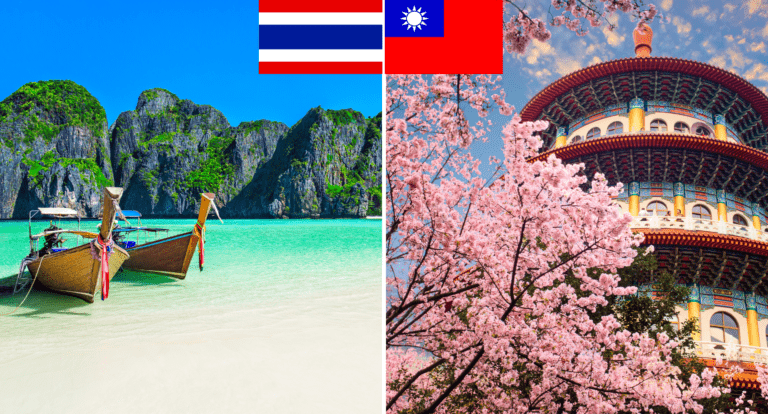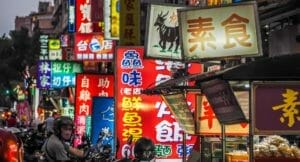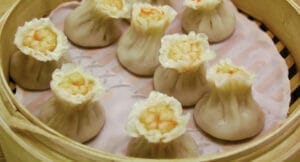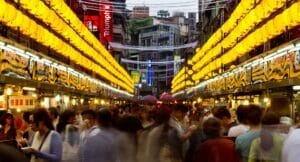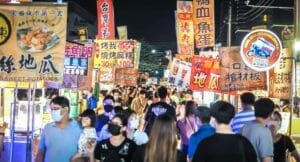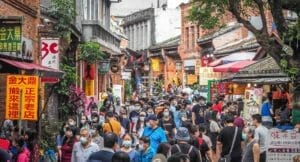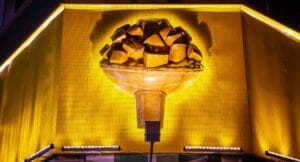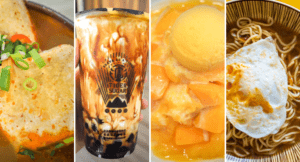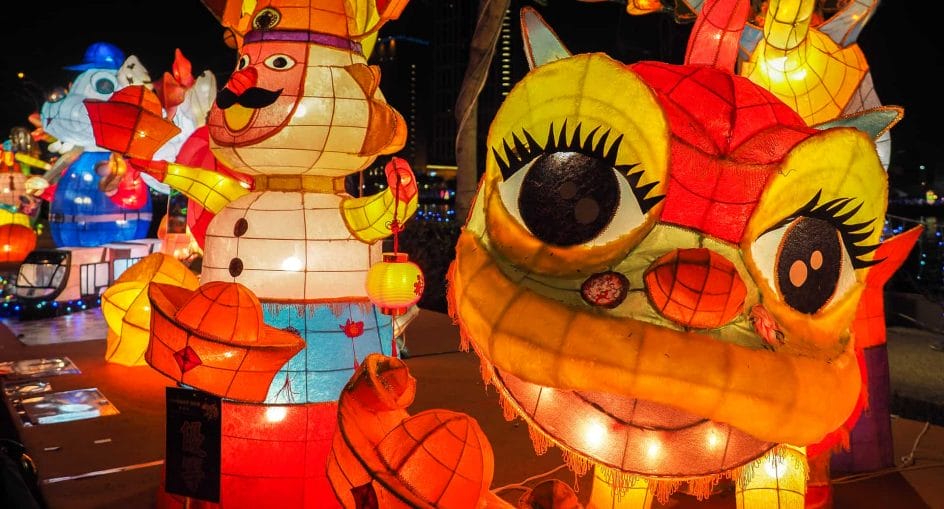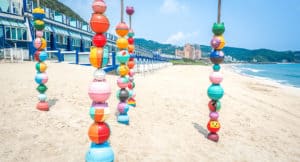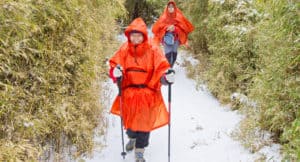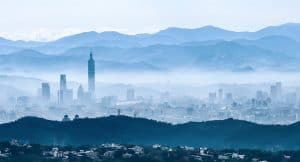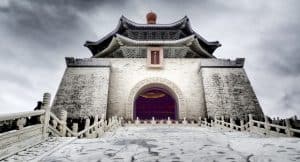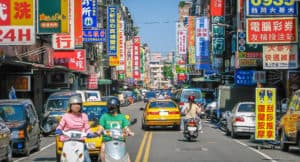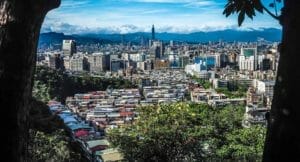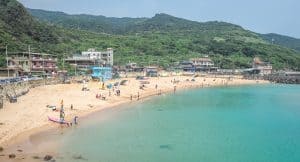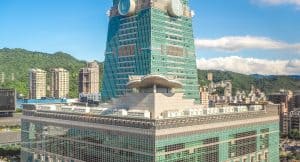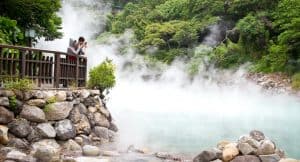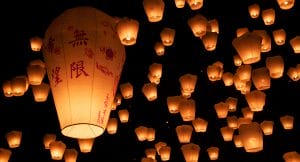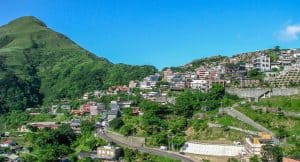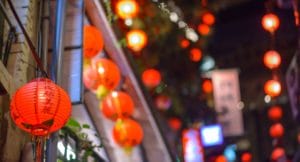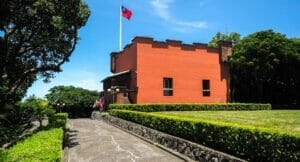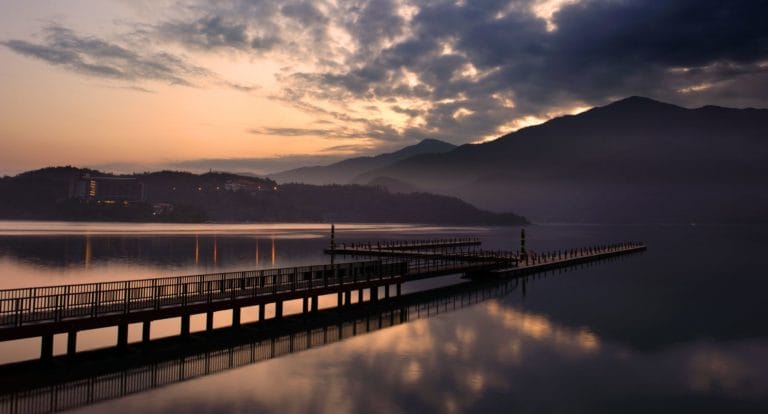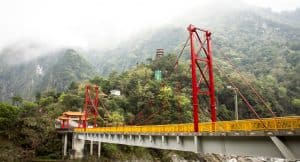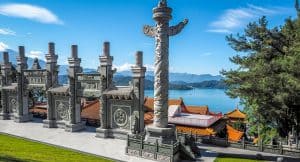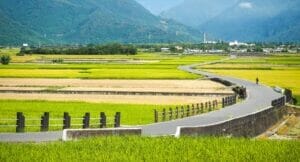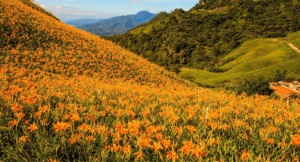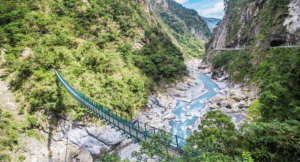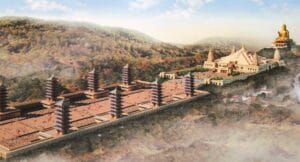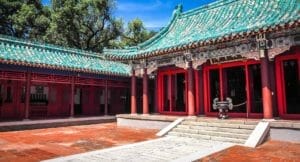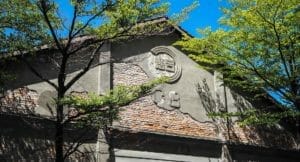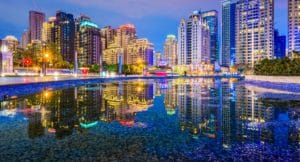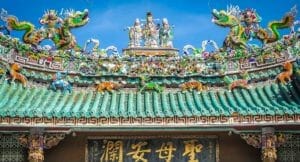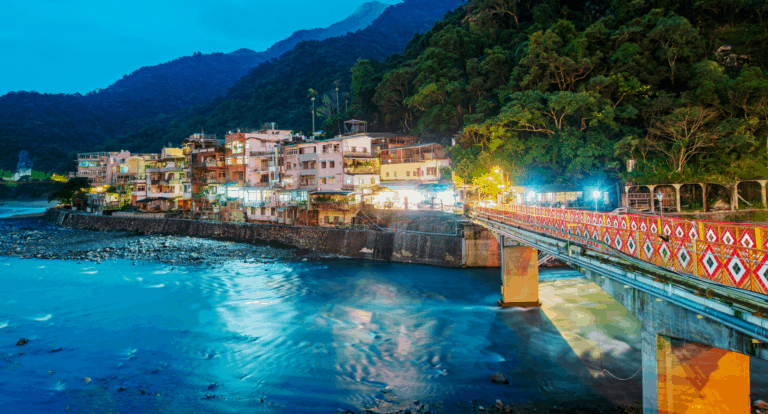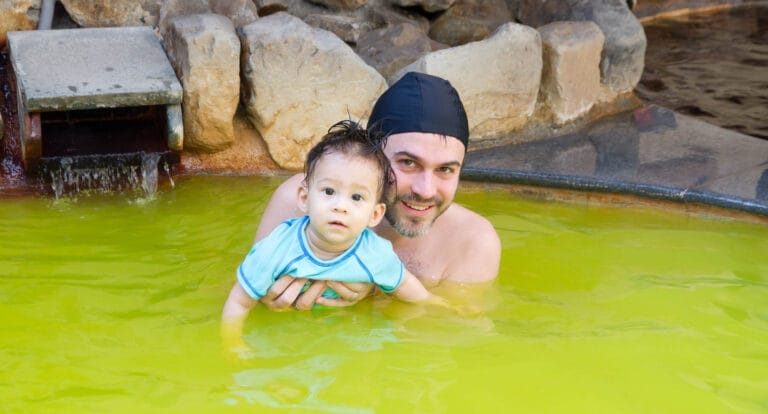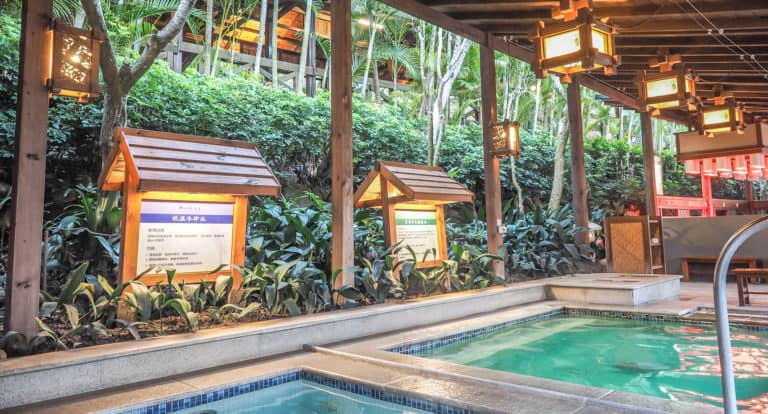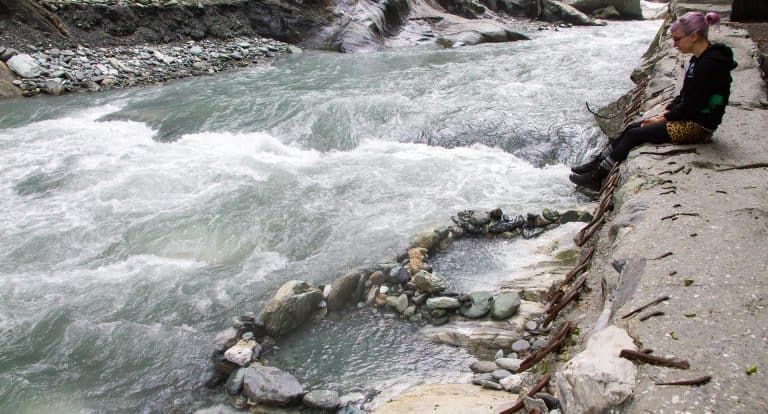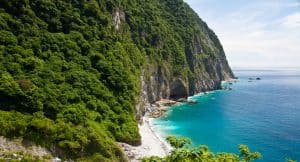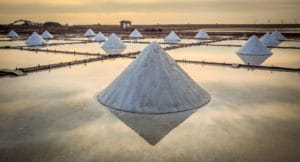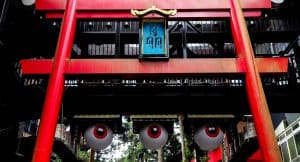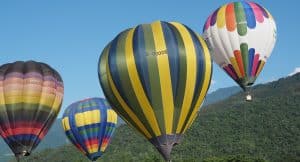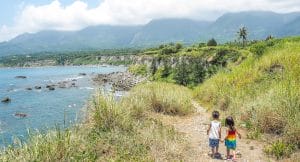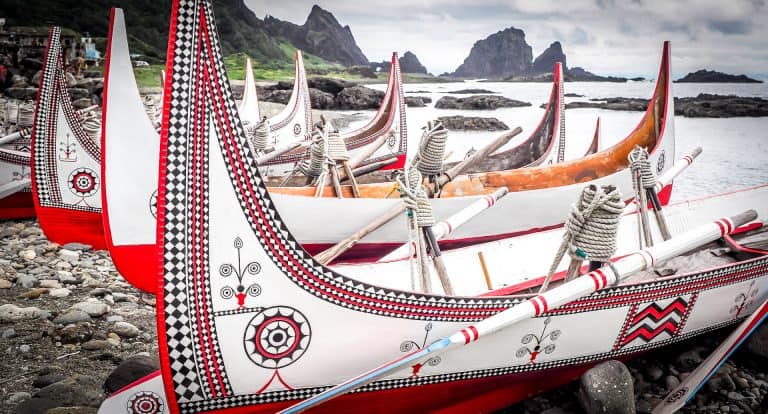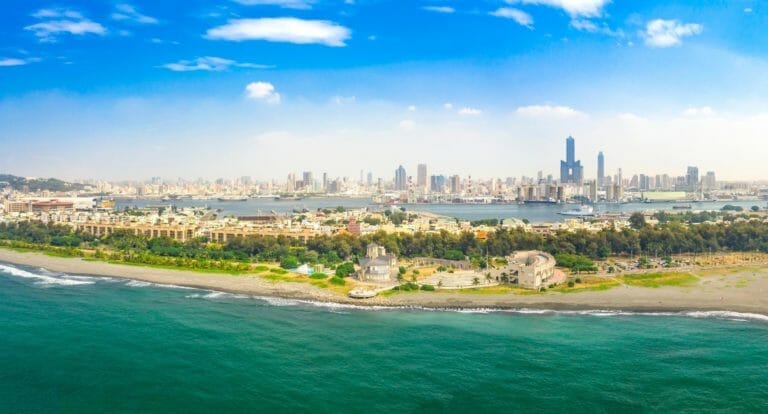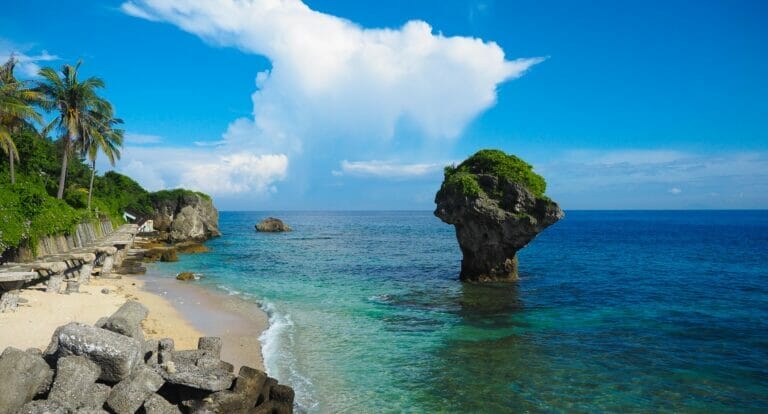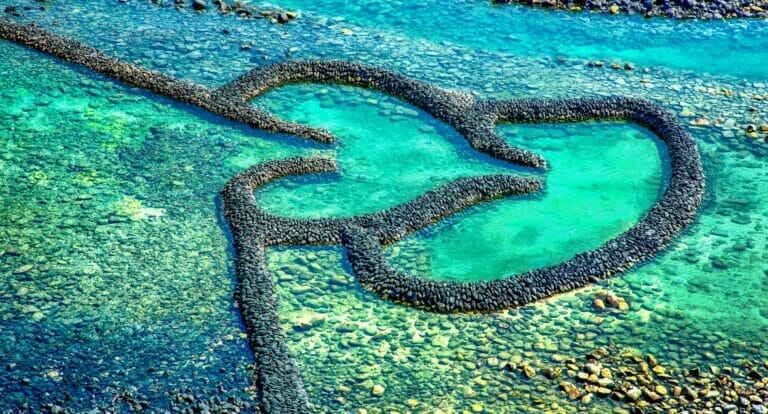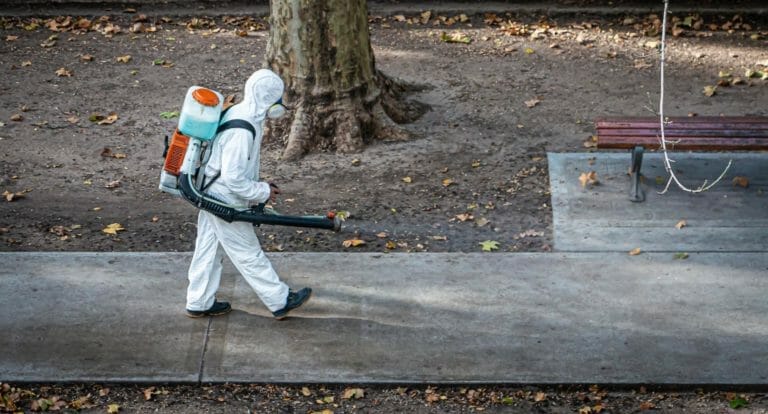
A 2024 Taiwan Travel Guide for Planning Your Trip
Last updated on Apr. 10, 2024 by Nick Kembel
Taiwan is a small island nation that packs a serious punch. At only 36,193 km², it is about the size of Vancouver Island in my native Canada, but home to a staggering 23.9 million people.
Do not be fooled by its compact size, however. There are many reasons to visit Taiwan: the tallest mountains in Northeast Asia, rich history & culture, welcoming locals, some of the best night markets and street food in the world – the list goes on. To get a better idea, see my ever-growing list of things to do in Taiwan.
I’ve lived in Taiwan for over 10 years. I’m married to a Taiwanese, and my two kids were born and raised in Taiwan. I’ve written articles about Taiwan for CNN, National Geographic Traveller, Discover Taipei, and Taiwan Travel Magazine, as well as my book, Taiwan in the Eyes of a Foreigner, which has sold more than 7000 copies.
This Taiwan travel guide links out to all of my most useful articles for planning a Taiwan trip. Here on my Taiwan travel blog, Spiritual Travels, you’ll find some of the most comprehensive Taiwan travel information Taiwan tourism details available in English online, all based on years of on-the-ground research.
Let the below be your personal guide to traveling in Taiwan. I’ll be covering a wide variety of topics below, so use the table of contents to jump to the info you need! If you prefer Q&A format, you can find all the same info in these FAQs about Taiwan.
Table of Contents
Travel Restrictions and Visas
As of October 13, 2022, Taiwan is totally open for travel. All COVID-related travel restrictions are finished. That brought to an end the 938 days total that Taiwan’s borders were closed to some or all international tourists!
Currently, you just need to find out if your country is eligible for visa-free entry (most are), and for how many days. If you need a visa for Taiwan, or want to stay for longer than the visa-free period, you’ll need to apply at the Taiwan office in your country before coming.
Besides the visa, there are no special forms, tests, vaccines (these were never needed) for entering Taiwan. You just need to fill in the normal arrival card when you arrive, or do it online before you come. Note that some people have reported not receiving an email confirmation after filling in the online form, so you may want to just do it when you arrive in Taiwan. You can stay in any hotel or accommodation you want, including hostels (these weren’t allowed until March 20, 2023).
The outdoor mask mandate ended in late 2022 and the indoor mask mandate ended in early 2023. Now, you only need to wear masks in medical facilities in Taiwan. However, many locals are still wearing them in public.
Following the April 2024 Hualien Earthquake, Taroko Gorge in Hualien is totally closed to visitors for an estimated 6 months to 1 year. Everywhere else in Taiwan is open as normal and fine to visit. Here’s my list of things you can still do in Hualien besides Taroko Gorge.
If you ever have any questions about anything related to traveling in Taiwan, you can call the 24-hour English tourist hotline at 0800-011765 (from outside Taiwan dial 886-800-011765). For COVID-specific questions, dial 1922 (from outside Taiwan dial 886-800-001922).

Taiwan Travel Planning Group
The absolute best place you can go for any questions about planning your Taiwan trip is my free Facebook group, Taiwan Travel Planning.
Literally any question you have about traveling in Taiwan or planning your Taiwan trip will be answered within 1-2 days by me or other members of the group. I’m also happy to look over your itinerary and give you suggestions. Because I do spend a lot of time every day in the group answering questions, I’ve created this Buy Me a Coffee account for anyone who wants to say thanks (my readers requested this!)
Take a Tour or DIY Travel?
The main purpose of this page, my website, and my Facebook group is to help you plan a DIY trip to Taiwan. Taiwan is an incredibly safe and easy country to travel around. However, this does require some advance planning, especially as trains and hotels in popular destinations in Taiwan often sell out. Generally, Taiwan is not a very suitable country for just showing up and figuring it out once you get there. Even more so since COVID, advance bookings for almost everything are the norm.
If you’re looking for a luxury, fully customized tour of Taiwan, I recommend Life of Taiwan. Their team of experts are some of the most knowledgeable in the industry. They provide personalized tea, food, cultural, or family tours of Taiwan and put you up in some of the country’s most exquisite hotels. If you contact them, please let them know that Nick sent you over!
If you’re in a rush and just want to see the best of Taiwan in a short period, I recommend this Taiwan 5-day tour. It doesn’t include Taipei, which is best visited in a day or two on your own before or after the tour.
What most visitors to Taiwan do, however, is plan their trip on their own. The country’s amazing TRA train (round-island) and High Speed Rail (down the west coast from Taipei to Kaohsiung) systems are actually faster than driving.
Then, when you get to your destination city, you can hire drivers for the day or go on guided day trips only when necessary. This is a very common approach, and there are numerous popular day trips and drivers available on Klook (sign up with this link for a TWD 100 credit in your account). You’ll find that I recommend Klook tours, drivers, car/scooter rentals, discounted attraction tickets, train tickets, and more throughout my Taiwan articles. There are many good deals on there, so you can save a lot of money by using the platform for planning your Taiwan trip.
And for truly DIY or budget travelers, you can certainly do it all on your own, especially with all the articles you’ll find on my website, covering how to visit almost every corner of Taiwan.
Renting a car is also a great option – read my tips for driving in Taiwan here and why I rented my car with Klook.
One good idea is to try one of these free Taipei waking tours on Day 1, then take it on your own from there!
Before Your Trip: Flights, Insurance, Apps, Guidebooks
If you’re coming from a country in Asia, there are numerous budget flights to Taiwan. I’ve prepared this list of the cheapest budget flights to Taiwan.
I’ve tried many different flight websites for finding long haul flights to Taiwan (I live in Canada). My two favorites are Kiwi.com and WayAway. I usually try both these sites when booking my Taiwan flights. They are often (but not alway) cheaper than booking directly with the airlines.
What I like about Kiwi.com is special features like searching not only your departure point but other cities nearby and being able to enter “anywhere” as a destination, and “anytime” as a flying time. For flexible travelers, this allows you to find the cheapest possible flights and dates without searching a million times. Unlike other aggregate flight sites, Kiwi includes budget airlines (many of which fly to Taipei!) and routes combining multiple airlines that are not affiliated.
WayAway is an even newer site and is now my favorite. Like Kiwi, it includes budget airlines, plus it displays awesome calendars showing the price of flights on every day. But the really special feature on WayAway, which will appeal to frequent travelers, is WayAway Plus. Basically, for a small annual fee, you can get cashback (like real cash, deposited to your account) not just for your flights but also any hotels you book through their system. Sign up with this link and you’ll get 10% off WayAway Plus!
Having said that, there are benefits to going with the airline directly, such as being able to easily contact them when needed. rather than going through a third party. China Airlines and Eva Airlines (the one with the Hello Kitty planes!) are two of Taiwan’s largest carriers.
For travel insurance, it’s pretty much a must nowadays. I recommend SafetyWing or Insubuy. Find more details about why in my guide to choosing travel insurance for Taiwan.
Which apps should you download for Taiwan? I’ve got you covered in this guide to the best Taiwan apps for travelers.
Last but not least, I may be old school, but I still love using travel guidebooks for planning my Taiwan trips. My favorite is and always has been the Taiwan Lonely Planet (I have about 5 different issues of it). I also recommend the Bradt Taiwan, written by long-term Taiwan resident Steven Crook. He also co-authored this amazing book covering the history of Taiwanese food, which I highly recommend.
Moving to Taiwan?
If you’re planning on moving to Taiwan for work, family reasons, or simply because Taiwan is an awesome place to live, then you should head over to my novella-sized guide to living in Taiwan.
In that article, I focus more on visa issues, getting a job in Taiwan, finding an apartment, making friends, and all other aspects of daily life in Taiwan, whereas below, I’ll stick mainly to things you need to know for traveling around Taiwan.
Taiwanese History & Culture
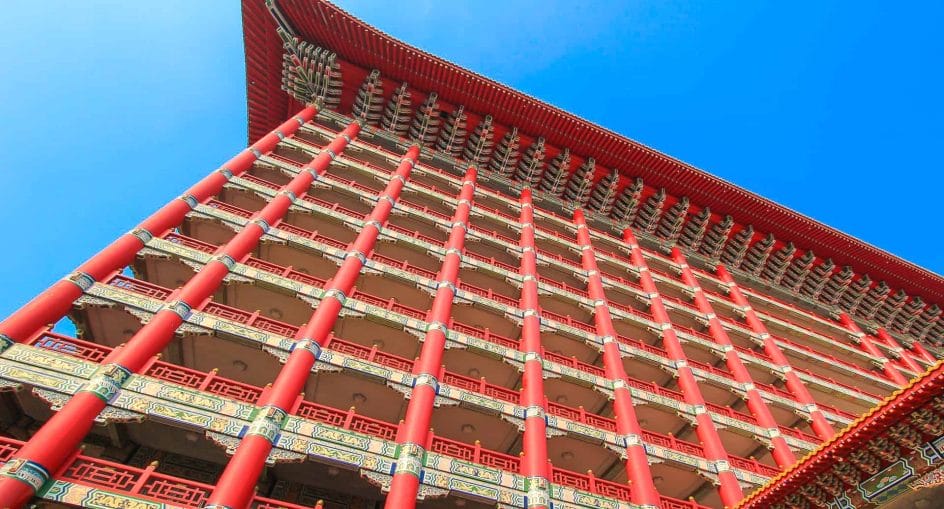
How much do you know about Taiwan? Having lived in Taiwan for many years and married a Taiwanese, I know for a fact that many people around the world know little to nothing about Taiwan. Even some of my friends and family members back home think it is the same as Thailand. For this reasons, I’ve even written this article to explain the differences between Taiwan and Thailand as this one to share some fun and interesting facts about Taiwan.
Taiwan is a small island nation in East Asia. Culturally, it is usually considered part of Northeast Asia, but geographically, some argue that it is closer to Southeast Asia. Taiwan was the original homeland of the Austronesian people, who went on to populate many islands of the Pacific in canoes. Today, their descendants include the 16 recognized aboriginal tribes of Taiwan.
Taiwan was briefly colonized by the Dutch and Spanish, while the Portuguese famously called it “Formosa”, or “beautiful island”, a name which stuck for centuries. Over the last 500 years, millions of people have migrated to Taiwan from China, especially Fujian province in the southeast. That’s why the local language of Taiwan, “Taiwanese”, is also called Minnan; it is the same as the Chinese dialect spoken in the Minnan region of Fujian. Taiwan remained on the fringe of Chinese imperial influence for centuries, then fell to Japanese occupation from 1895 to 1945.
In the Chinese Civil War, the nationalist KMT party of the Republic of China lost to the Communist Party in 1949 and fled to Taiwan, along with millions of Chinese soldiers and refugees from all over China, bringing their language (Mandarin), food, and culture. They thought they’d take back China someday, but they never did. That’s why Taiwan is still officially (and confusingly) called Republic of China, but their passports now finally say “Taiwan” in bigger letters. In 2000, the DPP were the first non-KMT party to win an election in Taiwan. Current President Tsai Ing-wen belongs to the independence-leaning DPP party.
The relationship between Taiwan and China remains complex and is the source of much tension. China claims that Taiwan is a province of China and bullies Taiwan from entering the UN and WHO, and from using the word “Taiwan” in international events like the Olympics (they have to call their team “Chinese Taipei”. But most Taiwanese consider Taiwan independent, and anyone who has been to both countries knows just how different they are. Few countries officially recognize Taiwan, but it acts as an independent country in virtually every way.
Today Taiwan is a modern, vibrant democracy with a free press. It is known for its welcoming people, efficiency, safety, and incredible street food. It has been chosen as the top country in the world for expats. It was also the first country in Asia to legalize equal (gay) marriage rights. Taiwan was one of the success stories in its handling of the COVID pandemic. Also read about some of the most famous people from Taiwan here.
Should you tip in Taiwan? Most often the answer is no. Learn all about Taiwan’s money and currency here.
Taiwanese Food
One of the great pleasures of visiting Taiwan is enjoying the country’s incredible food. Indeed, may travelers from Asian country’s come to Taiwan JUST for the food. Taiwanese is especially known for its incredible variety of cheap and delicious street food.
The best place to try Taiwanese street food is in night markets. Every city in the country has a night market (here are the best night markets across Taiwan), while Taipei has more than 50. Here I introduce the best night markets in Taipei, night markets in Taichung, night markets in Tainan, and night markets in Kaohsiung. Also don’t miss my favorite night market in the country, Keelung Night Market!
Besides street food, some restaurant experiences you may want to enjoy in Taiwan are DIY barbecue joints, all-you-can-eat hot pot, quick fry (a kind of local eatery suitable for groups, and with lots of cheap dishes meant for sharing, with lots of beer), and Din Tai Fung, the country’s most famous restaurant, which specializes in xiaolongbao (soup dumplings). In this article, I recommend 80+ of my favorite restaurants in Taipei, arranged by style, and the best restaurants open all night in Taipei here!
Seafood lovers should also visit Addiction Aquatic Development, an upscale gourmet seafood market in Taipei, or consider visiting one of the country’s many port markets.
For vegetarians and vegans, you’ll be happy to know you’ll be spoiled for choices in Taiwan. See the vegetarian section of my street foods article, or keep an eye out for the character for vegetarian 素 displayed on Buddhist vegetarian restaurants; many of them are buffet style and you pay by weight. You can also say “I am vegetarian” (wo chi su/我吃素), “Do you have anything vegetarian” (you sude ma?/有素的嗎?) or “Is this vegetarian” (zhe shi sude ma?/這是素的嗎?)
Besides all the articles before, I’ve got several newer food and night markets guides here on my other website, TaiwanObsessed.
When To Visit Taiwan
Deciding on a season or month for your trip to Taiwan is the first step to planning your Taiwan travels, and thus the first topic to cover in this Taiwan traveling guide. To make things easier, I’ve written this dedicated guide to the best time to visit Taiwan. In it, you’ll find a description of every season and month of the year in Taiwan, and links to my 12 individual guides for visiting Taiwan in every month of the year. I update these articles constantly to add upcoming events and Taiwan travel news.
To summarize that article for you here, there’s no real “high” or “low” season for travel to Taiwan; each season of the year comes with some ups and downs. Summer is extremely hot and humid and comes with the chance of typhoons, but it’s also the best time for Taiwan’s beaches, outlying islands, and water-based activities.
Meanwhile, winter can be gray and chilly, but is the best time for hot springs and seeing cherry blossoms. Be careful if planning a trip around Chinese New Year, as many things will close (see my list of attractions and what days they close), and it can be really difficult to travel around when half the country is on the road. Spring has warm weather but also a mini rain season, while autumn is my personal favorite for these reasons.
Below you’ll also find my individual guides to each season in Taiwan. But don’t fret too much about it; if you can only visit at a certain time of the year, there’s really no bad time to be in Taiwan!
Best Taiwan Travel Deal
Who doesn’t want to find a good deal when traveling to Taiwan? Here are some of the websites and services I regularly use for planning my Taiwan travels:
- Klook: Get big discounts on everything from High Speed Rail & attraction tickets to restaurant vouchers and guided tours. Sign up with this link to get a free TWD100 credit!
- KKday: While Klook is a Hong Kong compared, KKday is the Taiwan version of it. Some activities are the same as Klook, while some are unique. I prefer Klook because KKday sometimes has poor English, but I still sometimes use KKday for things that Klook doesn’t have.
- Booking: My preferred site for finding the best hotel deals in Taiwan.
- Agoda: Some users say they find cheaper prices on Agoda for Asian destinations, including Taiwan.
- Cookly: Find the best cooking courses in Taiwan.
These are some examples of great travel deals you can find on Klook:
Taiwan Travel Passes
One way to save money on travel around the world nowadays is by using city travel passes. Taiwan has a few available, but in order for them to actually save you money, you have to understand how they work, and get the right one for your needs.
Here are some travel passes in Taiwan that you may consider getting:
Taiwan Fun Passes
These 1 to 3-day passes include all transportation in and around Taipei, entrance fees to a long list of attractions, and some tourist shuttle buses for day trips out of Taipei. The most popular one is the Taipei Unlimited Fun Pass, which you can buy here.
Read my detailed review of all the Taipei Fun Passes to see how they work and determine if any of them will be worth it for your Taiwan trip. It only makes sense to get one if you plan to do a lot of sightseeing and MRT riding in Taipei in 1-3 days. Otherwise, I recommend just getting an EasyCard.
You’ll get a TWD 100 credit toward your Fun Pass if you sign up for Klook with this link first before booking!
I haven’t reviewed it yet, but there is a new Klook Taipei Pass. This one is for attractions only, but you have more time to use it, so it’s better for people who will have more time in the city.
Easy Cards
Don’t confuse Taipei Fun Passes with the EasyCard, which is what everyone in Taipei uses to swipe onto the MRT and city buses. Read my detailed EasyCard guide for more info than I’ll provide here.
Taipei Fun Passes are designed for tourists, while the EasyCard is a reloadable card used by everyone else, including tourists who don’t get a Taipei Fun Pass. They cost TWD 100 (you can no longer get this deposit back), plus whatever money you load onto them. You can swipe them to ride the MRT in Taipei, Taichung, and Kaohsiung, all city buses in Taiwan, some ferries, and to pay for taxis, items in convenience stores, and more.
You can get an EasyCard from any MRT station, including the Taoyuan Airport MRT station, and load money onto it. You can also order an EasyCard for pickup when you arrive in Taiwan.
Sun Moon Lake Passes
The other place you will find travel passes in Taiwan is at Sun Moon Lake, one of the country’s most popular attractions (we’ll get to those below). There are numerous Sun Moon Lake passes to choose from, and you can buy them from 7-Eleven iBon machines or from train stations in Taichung, the nearest major city.
Like the Taipei Fun Passes, these only save you money if you use them for enough avtivities. Most also include transportation to and from Taichung.
Learn all about the passes and how to use them in my Sun Moon Lake Pass review. Note that these pass prices and what they include are often changing.
Best SIM Card and WiFi Device
There’s no doubt that having an Internet connection while traveling in Taiwan is super convenient. You can check GoogleMaps to find the way, communicate with hotels, find bus times, etc. Nowadays, it’s pretty much essential.
A SIM card is the best idea in my opinion, but some people also go for an eSIM like this or pocket Wifi device. I compare all three in my guides to SIMs for Taiwan and eSIMs for Taiwan.
I recommend pre-ordering your SIM card for pickup when you arrive at Taoyuan International Airport. If you go with a WiFi device, then I recommend this one. Note the pick up times – if you arrive in the middle of the night, you may have to pick one up in the city.
You’ll get a TWD 100 credit toward your Taiwan SIM card or WiFi device if you sign up for Klook with this link first before booking it.
Another option that I have yet to fully understand myself is eSIMs for Taiwan – especially considering that the newest iPhones don’t even have SIM card slots anymore. If you are tech-savvy, check them out!
Taipei: The Tantalizing Capital of Taiwan

In some countries, you want to get out of the capital as soon as you arrive. This is not the case with Taipei. For most visitors to Taiwan, I recommend budgeting at least two full days for Taipei City alone, plus add 1-2 more days for day trips from Taipei (even more if you can!)
Taipei is always buzzing with activity; by day, you’ve got atmospheric historical neighborhoods to explore, towering Taipei 101, landmark Chiang Kai-shek Memorial Hall, Beitou Hot Springs, Maokong Gondola, Longshan Temple, and hikes in the hills (and volcanoes!) surrounding the city. After the sun goes down, it’s time to eat ’til you drop in the city’s famed night markets: the most famous ones are Shilin, Raohe, Ningxia, Tonghua, Nanjichang, and Huaxi Night Market.
As if that weren’t enough, Taipei is incredibly safe, and getting around is a breeze on the MRT, one of the best metro systems in the world.
Things to Do & Taipei Itineraries
Here is the most popular article on my website: 50+ awesome things to do in Taipei. For the less famous spots, see my off-the-beaten-track guide to Taipei. Below I’ve also linked to all my Taipei articles.
Besides the below articles, I’ve also got guides to spending one day in Taipei and how to plan a Taipei layover on my other website, TaiwanObsessed.
The above itineraries will make things easier for those will little time for planning. But my recommendations for Taipei don’t stop there.
For people who want to dig a little deeper and further customize the Taipei portion of their Taiwan trip, here some useful resources that further explore how much Taipei has to offer, including its best temples, night markets, hikes, and beaches.
Also see the my post below for the best times of the year to visit Taipei; the weather of Taipei is quite different to that of other parts of Taiwan, so if your trip to Taiwan is mainly focused on Taipei, you’ll find this article more useful than my “Best time to visit Taiwan” article I linked to above.
Coolest Neighborhoods & Where to Stay
Deciding where to stay in Taipei can be rather intimidating, as there are so many cool neighborhoods to choose from.
Let me make life easier for you by breaking it down to the best neighborhoods to stay in Taipei, with my hotel recommendations for each one. For each area of Taipei, I’ve included hotel recommendations for budget, mid-range, and luxury travelers, also pointing out which ones are suitable for travelers with kids. I’ve also got specific guides to the best hostels and luxury hotels in Taipei.
Besides my “where to stay in Taipei” article below, I’ve got detailed guides to some of my personal favorite neighborhoods in Taipei: Beitou for hot springs, historic Dadaocheng, and funky, gay-friendly Ximending. Start planning your walking tours with these guides!
If you have a very early or late flight, here are my recommended hotels in and around Taoyuan Airport.
Day Trips from Taipei
When deciding how long to stay in Taipei, you have to factor in that there some really incredible day trips from the city!
I normally recommend that, if you can, dedicate two full days to exploring Taipei, then another one or two days for day trips. If you only have one day in your Taiwan travel plan to do a day trip from Taipei, I would suggest that you plan it carefully. This way, you’ll be able to squeeze in several of my recommended 40 day trip ideas into one day.
The following five stops are some of the most popular day trips from Taipei, and since they are all fairly close together, you can combine them into one killer day trip from Taipei. There are even some shuttle buses deals like this that can make this even easier to accomplish.
- Jiufen: A former gold mining town on top of a mountain, famous for its atmospheric staircases and teahouses
- Shifen Waterfall: The widest in Taiwan, accessed from a cute train station where people set off sky lanterns
- Houtong: The “Cat Village”, literally a village full of cats
- Keelung: A harbor city with the best night market in Taiwan, forts, beach, and more
- Yehliu Geopark: Odd, wind-blown rock formations on the coast
- Tamsui: A popular riverside promenade with unique foods, beaches, and picturesque colonial forts
If you don’t want to drive or figure out public transportation, there’s an awesome English service called Parkbus Taiwan, which takes guests on day trips from the city for hiking and other activities. Use my discount code “Spiritual10” at checkout to get 10% (may not be available for some events).
There are practically unlimited day trip possibilities from Taipei. This is why myself and so many other expats love living in Taipei; you get the excitement of the city, but you can go somewhere different every weekend. Because Taiwan is so small, and thanks to its amazing transportation system and the High Speed Rail, you can go almost anywhere in Taiwan in a day or weekend trip.
Planning Your Trip around Taiwan
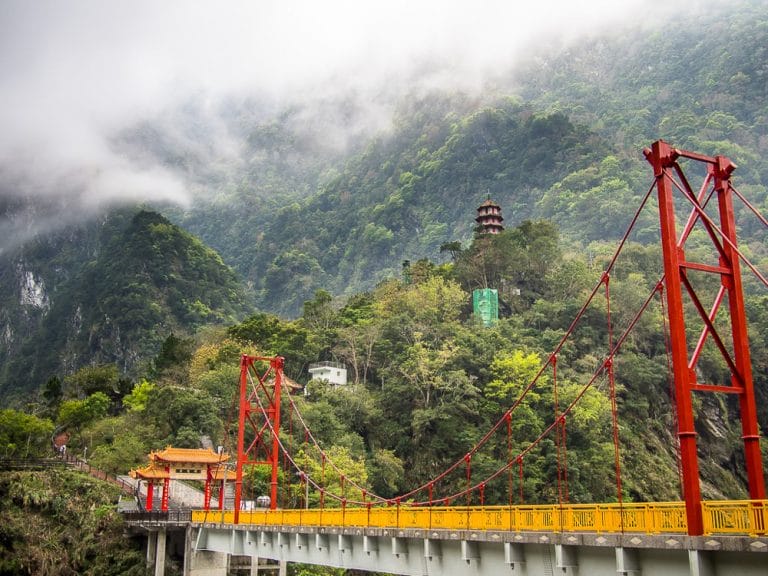
One of the hardest parts of planning a Taiwan trip is mapping out the perfect Taiwan travel itinerary.
What a lot of people do is book their trip first, and then realize they didn’t budget enough time for everything they want to see. Moreover, some of the best things to do in Taiwan are on opposite coasts, with 3000-meter mountains between them!
For example, many people only schedule around one week for their Taiwan trip. Then they decide they want to visit Taipei, Taroko Gorge on the east coast, and Sun Moon Lake and/or Alishan, which are in Central Taiwan but accessed from the west coast. On the map, these three top scenic attractions in Taiwan look fairly close together. But guess what? There are no buses that cross the Central Mountain Range of Taiwan. You can do it in a car, but the road is super winding and takes a long time.
So what I see a lot of visitors doing is going from Taipei to Taroko Gorge first (2.5 to 4 hours on the train, one way). Then they have to return to Taipei, and then travel a similar amount of time down the west coast to reach Sun Moon Lake and/or Alishan. It’s certainly possible, but it means you have to use up an entire day of your trip on the road.
How can you resolve this common Taiwan travel dilemma? I feel the answer is in planning your trip better before you book it, so that you can budget enough days to travel all the way around Taiwan and see everything that you want to without rushing. Which leads to the next important question:
How Long Do I Need to Visit Taiwan?
With a week or less, you will probably only have time to visit Taipei, including some day trips, and perhaps do a 1 or 2-night trip to Taroko Gorge on the East Coast, or Taichung, Sun Moon Lake, and/or Alishan in Central Taiwan (and this would be really rushed).
If you want to do a full circle around Taiwan, these are the most obvious destinations along the way, going in a clockwise direction around Taiwan by riding the train: Taipei, Hualien (Taroko Gorge), Taitung, Kaohsiung, Tainan, Alishan, Sun Moon Lake, Taichung, and back to Taipei.
To do this, you are going to need two weeks or more. With exactly two weeks, you may even have to cut out one or two of the above stops, otherwise you’ll just be checking in and out of hotels every day or two.
With even more time, you can be less rushed, and potentially add more stops, such as the beaches of Kenting on the southern tip of the island (as a side trip from Kaohsiung), Lukang, spend more time in laid-back Taitung, or visit some of the offshore islands, like Green Island, Orchid Island, or Penghu. This is why I think 3 weeks is a great amount of time for visiting Taiwan, and if you can go even longer, all the better!
Taiwan Travel Itineraries
Here are my recommend itineraries for traveling around Taiwan.
The five-day itinerary is for a very short visit, while the second article provides Taiwan itineraries for 1, 2, or 3 weeks. These are tried-and-tested itineraries that I have done in some form or another several times, including with my kids (see more on that below)!
The itineraries for 2 weeks and up involve doing a full circle around Taiwan mostly by train, with a few buses as well. See the end of this article for more information on transportation options for getting around Taiwan.
Visiting Taiwan with Kids
My kids Sage and Lavender were born and spent the first handful of years of their life in Taiwan. They’ve seen more of the country than most visitors ever will!
Below are my super detailed guides to visiting Taipei with kids and how to plan a complete circle around Taiwan with kids. The latter article is very similar to my above Taiwan itinerary for 1-3 weeks, but with tweaks along the way to focus on sights that my kids loved the most, as well as recommendations for kid-friendly hotels in each stop along the way.
You may also be interested in the best amusement parks in Taiwan, where to see capybaras in Taiwan, and my guide to Yilan, the “kid-friendly county”.
Best Attractions around Taiwan
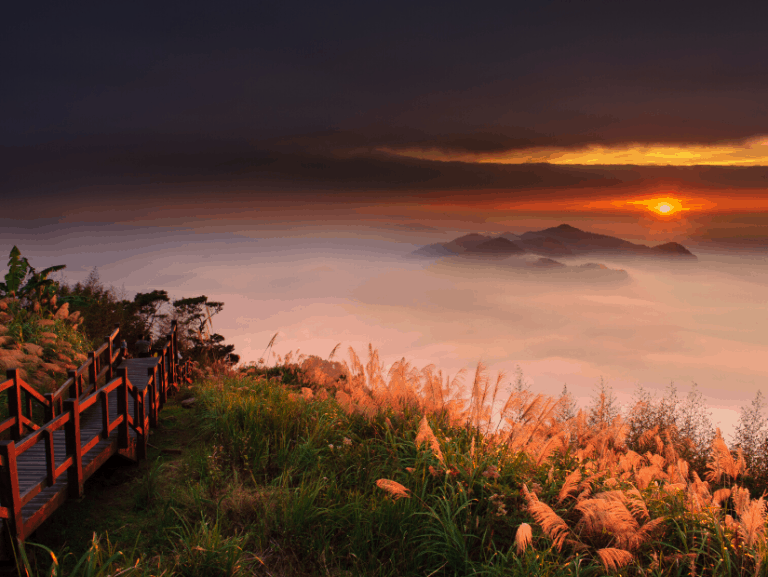
When trying to decide which destinations in Taiwan to include on your itinerary, it will be useful to take a deeper look at each of them to decide which ones are for you.
I’ll start with a list of some of the top scenic attractions. These five are the most common stops that people include on their Taiwan itineraries. I’ll follow that up with the best cities in Taiwan besides Taipei, best hot springs in Taiwan, best off-the-beaten track places to visit, and finally the offshore islands of Taiwan. Again, these are described in clockwise order going around Taiwan.
Top Scenic Attractions in Taiwan
- Taroko Gorge: dramatic canyon in beautiful Hualien County (currently closed indefinitely due to April 2024 earthquake)
- Taitung: Laid-back, rural corner of Taiwan, including the famous Brown Boulevard Cycling Path
- Kenting: Beaches on the southern tip of Taiwan
- Alishan: Mountain resort in Nantou famous for huge trees, high mountain tea, and sunrises above seas of clouds
- Cingjing (Qingjing) Farm: A high mountain farm and resort village that looks like a slice of Europe in Taiwan
- Hehuanshan: The best place to see snow in Taiwan (usually possible in January to March)
- Yushan: Tallest mountain in Taiwan and Northeast Asia, requires permits and planning to climb
- Sun Moon Lake: Beautiful lake surrounded by mountains
Here are my extremely detailed guides to the ones that almost all visitors try to include on their Taiwan travel itinerary:
Best Cities in Taiwan
Besides Taipei, which is a given, city lovers are going to find there are a few other cities they may want to include on their Taiwan travel itinerary. You can see my above-linked Taiwan travel itineraries to see how to fit these cities into your schedule.
Since there is one only train line around Taiwan, you’ll have to pass through all of them anyway if doing a full circuit around Taiwan. Since most cities in Taiwan are located on the developed west coast, the below are in counter-clockwise order. The varying time to reach them depends on whether you take the regular train/bus or the much faster High Speed Rail.
- New Taipei City: Taiwan’s largest city literally surrounds Taipei and is home to many of the most popular day trips from Taipei.
- Taoyuan: Best known for the international airport, consider stopping here to visit the impressive Xpark Aquarium on the way to/from the airport.
- Taichung: 1 – 2 hours south of Taipei on the west coast and the largest city in central Taiwan. Known for its artistic attractions like Rainbow Village, Gaomei Wetland, and as the birthplace of pearl milk tea.
- Lukang: 2-3 hours south of Taipei. Historic city famous for its traditional culture, food, and Old Street, and home to one of the most important temples in the country.
- Tainan: 1.75 – 5 hours south of Taipei on the west coast of southern Taiwan. Former capital of Taiwan famous for its temples, night markets, and considered by locals as the food capital of Taiwan.
- Kaohsiung: 2 – 6 hours south of Taipei in the southwest of Taiwan and end of the High Speed Rail line. Port city known for its revitalized harbor front, night markets, street art and Pier 2 Art Center, and the largest Buddhist monastery in Taiwan, Foguangshan. Here are my recommended hotels in Kaohsiung.
- Hualien: 2.5 – 4 hours from Taipei, only major city on the wild, scenic east coast of Taiwan. Mostly people stay in the city to visit nearby Taroko Gorge, but the city has a good night market and opportunities to experience Taiwanese aboriginal culture, such as this aboriginal cooking course.
- Taitung: 3.5 – 6 hours from Taipei, small city known for its aboriginal culture and end-point of most road trips down the east coast of Taiwan
Best Hot Springs in Taiwan
I happen to be a hot spring lover. Because Taiwan sits on the meeting point of two major tectonic plates, the island is geologically active, with dormant volcanoes and over 100 major hot springs! The most famous is surely Beitou Hot Spring in Taipei, while Wulai, Jiaoxi, and Jinshan can be visited as day trips from Taipei.
Here is my detailed guide to the 20 best hot springs in Taiwan, including information on hot spring etiquette.
Off-the-Beaten-Track Places to Visit in Taiwan
Just to make things more difficult for you, besides the many must-see places to visit in Taiwan I mentioned above, which already require at least two weeks to visit, there are loads of off-the-beaten-path destinations that are just as worthwhile.
Serious off-the-beaten track travelers should head to my other site, where I’ve got guides to relatively unexplored cities and counties like Taoyuan, Hsinchu, Yilan, Miaoli, Changhua, Yunlin, and Pingtung. I’ve also got this guide to off-the-beaten-track things to do in Taipei.
The below are articles cover some of the more remote or less visited (by foreign tourists) places in Taiwan. These are just the tip of the iceberg, but they are some of my personal favorites.
Depending on what kind of traveler you are, these may appeal to you more than the “must see” attractions I covered above!
The Offshore Islands of Taiwan
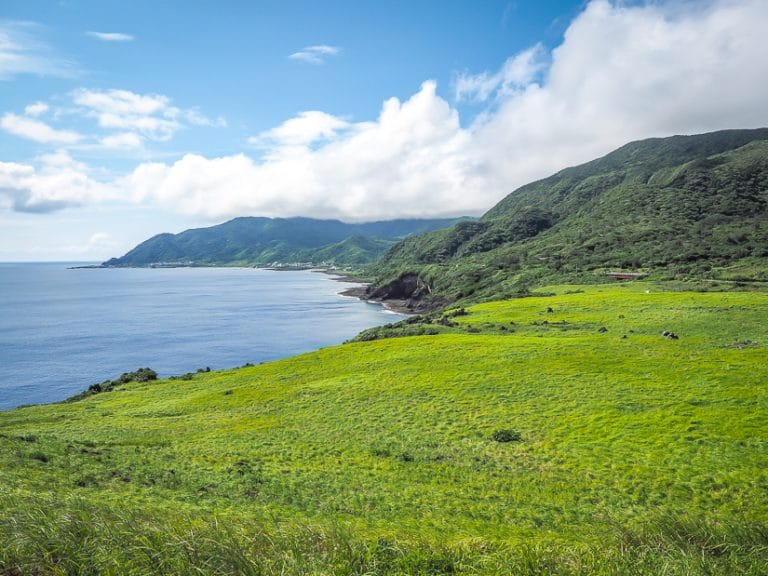
Yet another list of places you’ll want to visit during your Taiwan travels is the offshore islands. However, a visit to any of the offshore islands is like a trip within a Taiwan trip; visiting most of them involves a little more planning and time.
There are about half a dozen main ones to choose from. Also, the offshore islands are best visited in spring, summer (high season due to domestic tourists, but can be very hot), and early fall. In winter, they become very windy (especially Penghu) and/or many traveler’s services totally shut down (especially Orchid Island).
The first four below are most commonly reached by ferry, with Xiao Liuqiu being the closest to the Taiwan mainland. Orchid Island also has the option of flights in very small airplanes from Taitung, while Penghu has regular flights from Taipei and other cities in Taiwan. Kinmen and Matsu are much closer to China than Taiwan (they are so close to it that you can see China from their shores), so they require flights.
Here are the small islands of Taiwan that you may want to visit someday.
- Green Island: Off Taitung’s coast, best for scenery and snorkeling or scuba diving, and a saltwater hot spring.
- Orchid Island: Harder to reach/plan, and home to Taiwan’s most remote aboriginal tribe.
- Xiao Liuqiu: Snorkeling with sea turtles, and easily done as a day trip from Kaohsiung.
- Cijin: A long, skinny island protecting Kaohsiung’s huge harbor.
- Penghu: Best for beaches, sailing, island hopping and a fireworks festival.
- Kinmen: Much closer to China than Taiwan, known for military history and Kaohliang, a strong liquor.
- Matsu: Also very close to China, known for its tunnels and forts.
Transportation: How to Get Around Taiwan
Taiwan has an amazing transportation system, and getting around the country is a breeze thanks to its extremely reliable metros, buses, and railway systems.
It is still important to understand some things about getting around Taiwan, though, in order to avoid disruptions on your trip (like finding out all the trains to your next stop are sold out!)
If you follow my Taiwan itineraries, you’ll mostly be taking trains around Taiwan, with some exceptions. Getting to Alishan is more complicated, as it can involve a train, bus, or combination of the two. Sun Moon Lake and Kenting are also only accessed by bus. Luckily, you don’t need to book any of these bus rides in advance.
See here if you’d like to find a private driver in Taiwan.
Getting Around Taipei
Upon arriving at Taoyuan International Airport, you can takes a bus (TWD135, 1 hour), the new Airport MRT (TWD 165, 35-50 min), or a taxi (TWD1000-1500, 45 min to 1 hr) to Taipei.
I recommended pre-booking a private transfer to your hotel, which is usually a little cheaper than taking a taxi. Also see my more detailed guide to getting from Taoyuan Airport to Taipei. If your flight is very early or late, stay in one of these airport hotels.
The MRT is the lifeline and pride of Taipei. It is considered one of the best metro systems in the world. You’ll love it, and use it to get almost everywhere you go in Taipei.
In order to ride the MRT, it’s best to get an EasyCard from any station (or order it before your trip) and load some money onto it. This makes it easy to swipe in & out. You have to pay a TWD non-refundable deposit plus however much you want to load onto the card.
The EasyCard also works for buses and taxis in Taipei, ferries in Tamsui, and local buses in cities across the country. It can also be used on the Taichung and Kaohsiung MRT, and regular/local train tickets between cities that don’t require seat reservations. Note that for most long distance buses or trains, you won’t be able to use it.
Taxis are also cheap and plentiful in Taipei. Taipei has Uber, too, but it often isn’t any cheaper than taxis. Taxi drivers speak varying levels of English, and some not at all, so it’s a good idea to have your destination written in Mandarin when taking local taxis. Taxi drivers in Taiwan are honest and won’t try to scam you or rip you off.
Taking the Regular Train (TRA) around Taiwan
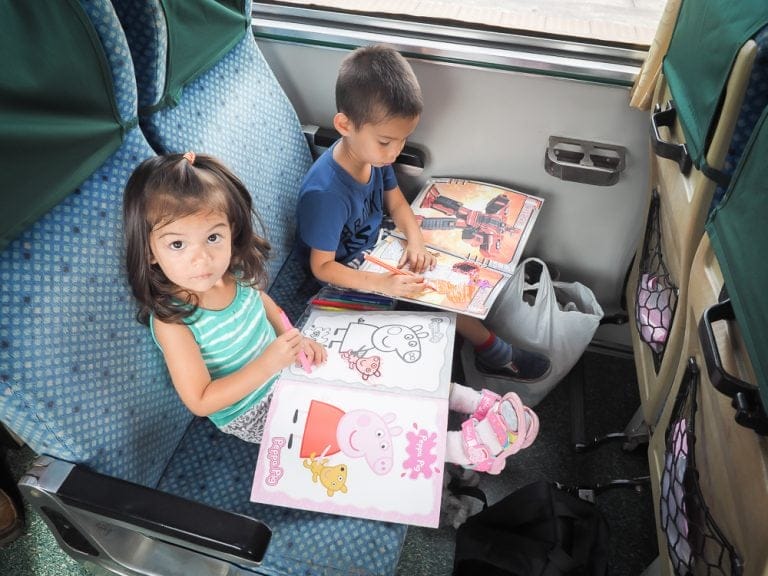
The regular (TRA) train does a full circle around Taiwan. Tickets can be booked online up to exactly 28 days in advance (or 29 days for Saturday trips and 30 days for Sunday trips). See details and screenshots for how to book train tickets online or on the app.
Trains sell out in Taiwan very often, especially on weekends and holidays. Sometimes they even sell out minutes after they go on sale, such as for long weekends, or for very popular rides (like the express train from Taipei to Hualien/Taroko Gorge).
For this reason, it’s very important to book your tickets in advance. Note that 28 days in advance means the tickets go on sale at precisely 12:00 a.m. (midnight). For example, if you want to travel on September 28, you should try to book your ticket at 12:00 a.m. on September 1, which is actually the night of August 31, Taiwan time of course.
If your train sells out, don’t freak out. You can always buy standing tickets on most trains. A lot of people do this, and just stand in the aisle or sit on the floor between train cars (see which ones below). It’s not comfortable for a long ride, but at least you’ll get there. Another option is to try a different time, or take a bus (but beware that there are very few buses running down the east coast).
Note that you are allowed to eat and drink on trains in Taiwan, and they all have toilets on board. You can even discreetly drink a beer on Taiwan trains, although most train station 7-Elevens no longer sell them. But be warned that Taiwanese people tend to be very quiet (and often sleep) on buses and trains, and they don’t appreciate noisy passengers. To be respectful, keep talking to a whisper, or just don’t talk at all. I can’t say how many times we have been “shhed” just for having a conversation at a reasonable volume on buses or trains in Taiwan.
There are different types of TRA trains in Taiwan, and it’s useful to know the names of them when searching for train times. Here they are:
- Local Train (區間車): Slowest, stops at every small stop, cheapest, least comfortable, and you can sit or stand anywhere. Buy ticket at station or swipe with EasyCard.
- Chu Kuang Express (莒光號): Regular trains that circle around Taiwan. Reserved seats, but you can always buy standing tickets from the train station ticket window.
- Tze-Chiang (Express / 自強號): Same as the above, but faster and fewer stops. Standing tickets also possible.
- Taroko / Puyuma Express (太魯閣號): Super express train from Taipei to Taroko Gorge/Hualien. Reserved seats only, and always sells out very quickly.
- Tze Chiang Lmt. Express 3000 (自強EMU3000): A new express train that is also reserved seats only.
The High Speed Rail (HSR)
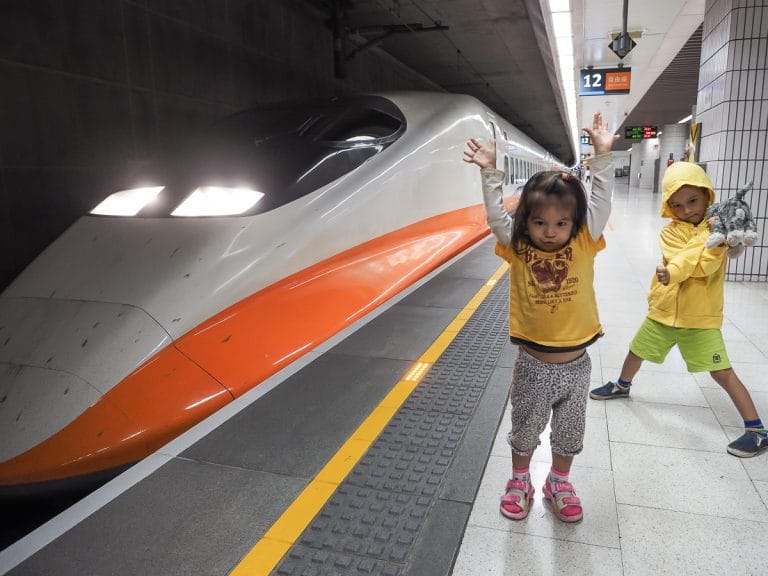
Taiwan has a Japanese-made high speed rail (HSR) sytem. The single line has 12 stops along the highly developed west coast of Taiwan, from Taipei city in the north to Kaohsiung city (called Zuoying Station) in the south.
The first station in Taipei is Nangang, while Taipei Main Station is the most useful, and connects to the Taipei City MRT, regular (TRA) trains, and Airport MRT. Banqiao is located in New Taipei City (the large city that surrounds Taipei City), and Taoyuan is close to the Taoyuan International Airport. To get to Taoyuan HSR station from the airport, you have to ride the Airport MRT a few stops in the opposite direction from Taipei.
Generally speaking, HSR tickets costs about twice as much as the regular train, but get you there twice as fast.
It’s important to note, however, that in most cities, the HSR station is located outside of the city center, just like airports tend to be, so you have to factor in time (and money) to get to the city center once you arrive. This is the case for every stop except for Taipei.
In some cases, though, the location of the HSR station can be more useful. For example, in Taichung, the HSR station is closer to Rainbow Village, and has direct buses to Sun Moon Lake. Similarly, in Chiayi, you can catch a bus directly from the HSR station to Alishan, and thus avoid going into Chiayi City. In Kaohsiung, the HSR station is right beside Lotus Lake, one of the city’s top attractions. To get to the Kaohsiung City center, you just have to hop onto the KMRT.
You can buy HSR tickets online up to 28 days in advance, and buying them early usually gets you an early bird price.
You can also buy discounted HSR tickets on Klook – buying them here allows you to get the early bird discount even when you’ve missed it on the official site. Note that if you buy your tickets on Klook, you have to follow the instructions provided to actually book your seat after you receive the voucher. You can do this online or in person at the station. You’ll need to show your passport. Note that this Klook deal is for short term tourists only; residents/ARC-holders aren’t supposed to buy them.
Unlike TRA trains, the HSR has three cars (#10-12) of unreserved seats. This means you can show up at an HSR station anytime and buy an unreserved ticket at full price from one of the machines. These never sell out.
You aren’t guaranteed a seat, but you can often get one. The only time when demand is crazy high is Lunar New Year and on long weekends, and even then, we’ve always managed to get on without waiting too long.
Special Trains in Taiwan
Besides MRTs (city metros), TRA trains, and the HSR, there are a few special small-gauge train lines in Taiwan. Mostly these are restored old trains that run along former logging lines, built by the Japanese when they were logging during their colonial rule of Taiwan. They tend to be fun and highly scenic rides for tourists.
Here are some of these special small train lines that you may encounter or seek out on your trip:
- Pingxi Line: this small train line provides access to some of the most popular day trips from Taipei, including Houtong, Shifen, and Pingxi. Most people board it at Ruifang, which has direct connections to Taipei by bus or TRA train.
- Alishan Forest Railway: This is the most interesting way to get from the city of Chiayi to the mountain resort of Alishan. However, the final section was destroyed in a typhoon, so you have to take a bus for the final leg. There are also parts of the train line running to scenic spots within Alishan National Scenic Area. You can find all the relevant information in my guide to getting to Alishan.
- Neiwan, Jiji, and Bong Bong Lines: These are three more scenic small train lines that far few foreign tourists ever make it to. They are in Hsinchu, Changhua, and Yilan (on top of Taipingshan Mountain), respectively.
Buses in Taiwan
There are some cases where you will need to take buses in Taiwan. Here are a few common routes that many visitors take:
- In Taipei City, you’ll need to take buses for getting to Yangmingshan National Park or to National Palace Museum
- You’ll also need to ride buses to popular day trip places in New Taipei City, like for getting to Jiufen or Yehliu Geopark. You can swipe EasyCard for all of the above.
- Buses are the only direct way for getting from Taichung to Sun Moon Lake, Sun Moon Lake to Alishan, and Chiayi to Alishan. Click these links to find out how to book them.
- You’ll also need to ride the Kenting Express bus from Kaohsiung to Kenting National Park.
- Buses also run between all major cities on the west coast of Taiwan. They are cheaper but usually a little slower than the train. There are no buses from Taipei to Hualien on the east coast.
Final Thoughts on Planning a Taiwan Trip
Well, I hope you’ve found more than enough information in my Taiwan travel blog for planning your trip. Taiwan remains largely closed to international visitors for the time being, but hopefully big changes are on the horizon.
Please feel free to check back again, as I’m constantly updating my Taiwan travel content to reflect the current situation. And if you’ve got any questions, please join my Taiwan Travel Planning group and I’ll answer them there!


